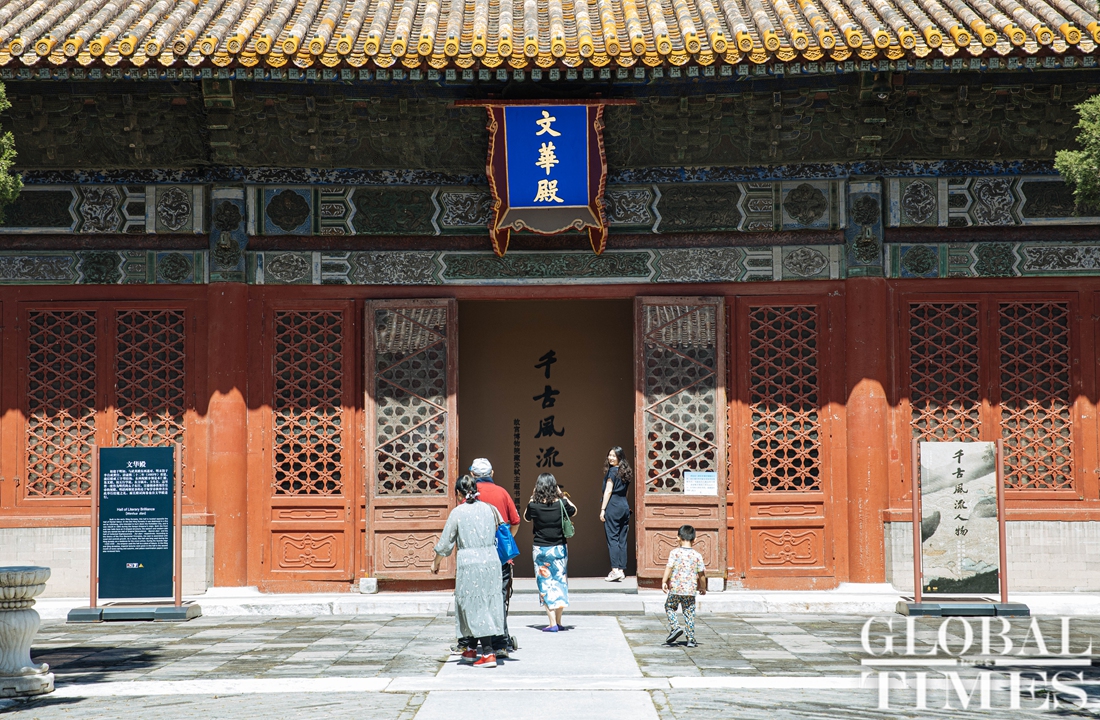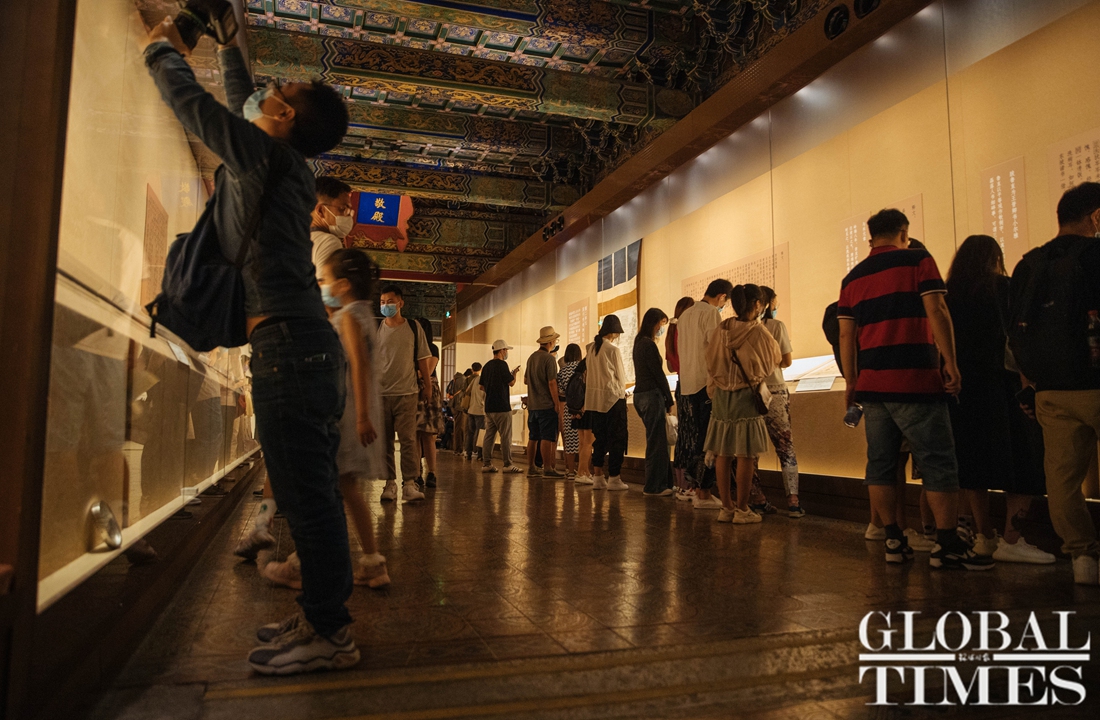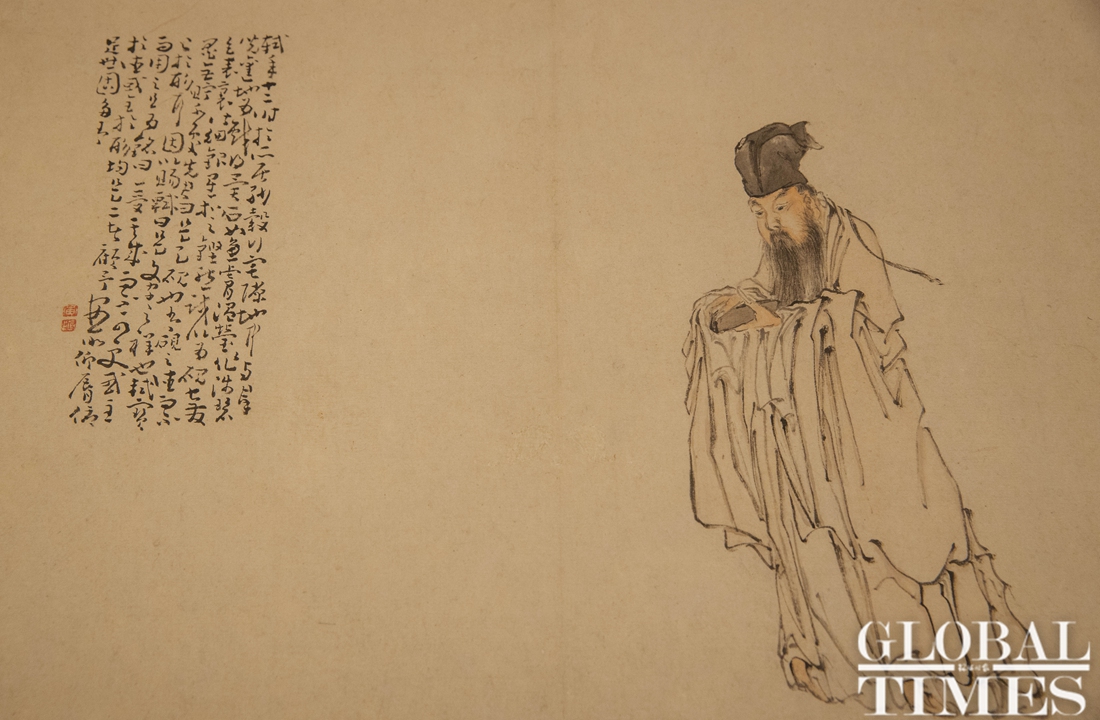ARTS / CULTURE & LEISURE
Su Shi exhibition launched at Palace Museum

Photo: Li Hao/GT
After the BBC eulogized Tang Dynasty (618-907) poet Du Fu in a documentary, calling him "China's greatest poet," China's Palace Museum opened an exhibition on Tuesday to introduce another well-known poet, Su Shi of the Northern Song Dynasty (960-1127). The exhibition takes visitors back to ancient China and offers various anecdotes about the versatile cultural icon.
The exhibition displays a total of 78 works including paintings, calligraphy, epigraphy rubbings and documents by Su and his teachers and friends, according to Ren Wanping, deputy director of the Palace Museum and curator of the exhibition.
High popularity
As one of the four greatest calligraphers in the Northern Song Dynasty (960-1127), Su was a poet, painter and gastronome, but he also suffered a lot of ups and downs in his life.
He passed the civil service examinations at the age of 19 and became a young official, gaining the appreciation of the emperor. However, he was later exiled after being framed by his political opponents. His characteristics of boldness, generosity, tolerance and lack of restraint can be seen in his calligraphy and poems.
Many of Su's poems have been selected in Chinese textbooks for primary and middle school students.
A lot of visitors told the Global Times that they had come to see the exhibition because Su Shi is their favorite poet, and they were interested in his life.
Gao Wei, a 72-year-old man, told the Global Times that he was very impressed by a picture showing Su's late life.
According to the introduction of the picture, Su borrowed hats and clogs from the farmers and encountered rain when he was demoted to live in South China's Hainan Province in his later years. His funny appearance was mocked by farmers, but he did not care and behaved very calmly.
"Su Shi's open-minded attitude to life makes me feel that I should also live a more cheerful and optimistic life," said Gao.
Lu Yao, a 47-year-old woman who was taking her son to the exhibition, told the Global Times that she initially hoped her son could learn something through the exhibition, but she did not expect that she herself would appreciate it so much.
"Su reminded me that the essence of life is that you can always feel the happiness and nature of life whenever and wherever you are," she said.

Photo: Li Hao/GT
First exhibition since COVID-19 outbreak
The exhibition is the first in the Palace Museum since the COVID-19 epidemic broke out as well as the first one amid the 600th anniversary of the establishment of the Forbidden City.
According to the museum's anti-pandemic measures, visitors need to book tickets online, and will have a pre-check including checking the health QR code and the real-name verification of ID cards at the ticket center. They are also required to wear facial masks during the visit.
"We will remind visitors if they are not wearing the mask properly. That's part of our job since the museum reopened to the public amid the coronavirus," one employee of the Palace Museum told the Global Times.
The exhibition is in the museum's Wehhuadian, or Hall of Literary Brilliance where imperial lectures were given and palace examination papers were reviewed during the Ming and Qing dynasties (1368-1911).
Wu Jing, a tour guide and blogger who came to conduct livestreaming for the exhibition, told the Global Times that he had high expectations for the show as Wehhuadian usually only opens to the public once per year.
He added that due to the coronavirus, the number of visitors entering the Palace Museum has fallen from 100,000 to 8,000, and many visitors who live far from Beijing cannot come to the museum.

Photo: Li Hao/GT
He and more than 10 of his colleagues have made a team to try to use livestreaming to renovate the tourism industry. Currently, the team has attracted around 1.5 million followers on Douyin, the Chinese version of TikTok.
Sun Hanguo, a 24-year-old publisher, told the Global Times that the exhibition gave the public a good opportunity to learn more about Chinese traditional culture.
He pointed that he felt very grateful that the efficient anti-epidemic measures taken by the Chinese government can help art events return, but also said it was a pity that the art communications between China and foreign countries are being influenced by the deadly virus.
The exhibition is scheduled to end on October 30, and on September 10, the Palace Museum is planning to showcase a huge new exhibition as part of the 600th anniversary.

